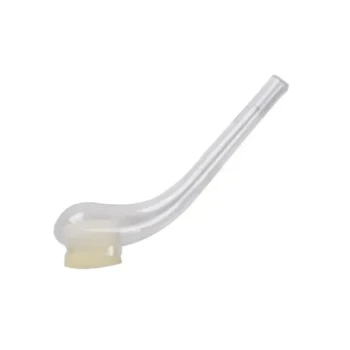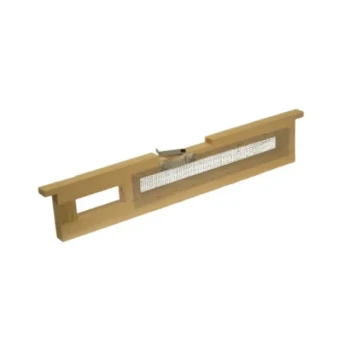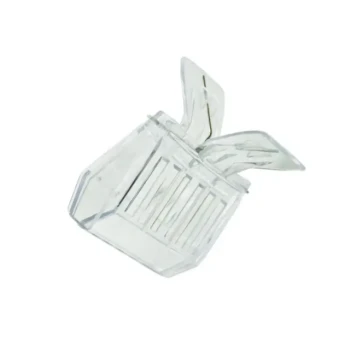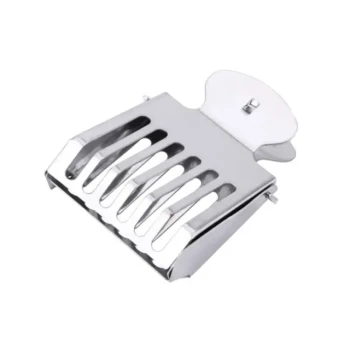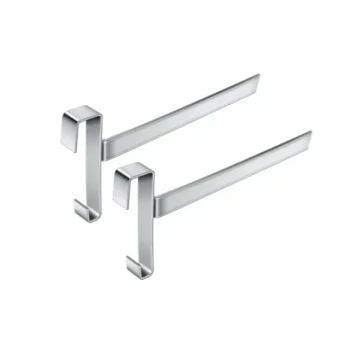Selecting a breeder queen is the single most impactful decision a beekeeper makes for the long-term health and success of their apiary. At its core, the process involves identifying a colony that exhibits a superior combination of heritable traits—primarily mite resistance, a calm temperament, and robust productivity—and then using that queen to propagate those genetics into the next generation of hives.
The goal of queen selection is not simply to find the hive that produces the most honey. It is a strategic process of balancing multiple traits to cultivate colonies that are resilient, manageable, and consistently productive year after year.
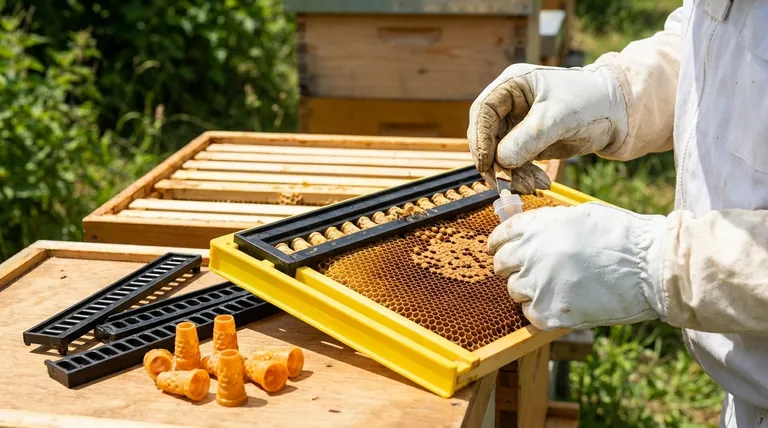
The Pillars of Queen Selection
Effective queen selection requires a holistic view of colony performance. While many factors are considered, a few key traits form the foundation of a strong breeding program.
Trait 1: Disease and Mite Resistance
This is arguably the most critical trait for modern beekeeping. The primary threat is the Varroa destructor mite, which weakens bees and transmits viruses.
A superior colony demonstrates resistance through specific behaviors, most notably Varroa Sensitive Hygiene (VSH). Bees with this trait can detect mites reproducing under a capped cell, uncap that cell, and remove the infected pupa, disrupting the mite's life cycle.
Trait 2: Temperament and Gentleness
A colony's temperament directly impacts your ability to manage it effectively. Working with gentle bees is safer, less stressful, and makes routine inspections far more efficient.
"Hot" or overly defensive hives are difficult to inspect thoroughly, leading to missed problems like disease or a failing queen. A calm demeanor on the comb is a highly desirable, heritable trait.
Trait 3: Productivity and Resource Management
Productivity is more than just the total pounds of honey in the super. It reflects the colony's overall efficiency.
A top-tier breeder queen's colony will not only produce a surplus honey crop but will also maintain a strong population and store enough resources for itself. It demonstrates a balance between expansion and provision.
Trait 4: Overwintering and Hardiness
This trait, often called hardiness, is a colony's ability to survive the winter with minimal losses and build up rapidly in the spring.
It is a key indicator of a colony's fitness, reflecting good genetics, efficient food consumption, and the ability to regulate the cluster's temperature through a long, cold period.
Understanding the Trade-offs
No single queen is perfect. Selecting for one trait can sometimes mean compromising on another, and understanding these trade-offs is crucial for realistic expectations.
The Aggression vs. Productivity Balance
Sometimes, the most productive and populous colonies can be more defensive. They simply have more resources (brood, honey, and bees) to protect, which can trigger a stronger defensive response.
Hygienic Behavior vs. Brood Quantity
Colonies with exceptionally high hygienic behavior may be slightly smaller. This is because they are ruthless in removing any imperfect brood, which, while excellent for health, can slightly reduce the overall number of new bees emerging.
The Genetic Lottery of Mating
A queen mates with 10-20 different drones on her mating flight. Even when you raise daughters from your best queen, their offspring will also carry genetics from the local drone population. This introduces variability that is largely outside your control without instrumental insemination.
How to Apply This to Your Apiary
Success in queen selection is built on data. You cannot select for traits you do not measure.
Step 1: Implement Consistent Record Keeping
For each hive, keep a simple log throughout the season. On a scale of 1-5, rate key metrics during every inspection:
- Temperament: (1=aggressive, 5=very calm)
- Population: (1=weak, 5=booming)
- Mite Load: (Results from an alcohol wash or sugar roll)
- Honey Stores: (An estimate of their winter readiness)
Step 2: Identify Your Champion Colony
At the end of the season or in early spring, review your records. The colony that consistently scores high across all your desired categories—not just one—is your candidate for a breeder queen.
Step 3: Propagate the Genetics
Once identified, use your breeder queen's genetics to improve your apiary. This is typically done by grafting larvae from her to raise new daughter queens for your other hives. This concentrates the superior traits you have selected for across your entire operation.
Making the Right Choice for Your Goals
Your breeding goals should reflect your beekeeping philosophy.
- If your primary focus is low-maintenance beekeeping: Prioritize queens selected for extreme gentleness and high mite resistance, even if it means a slightly smaller honey crop.
- If your primary focus is maximizing honey production: Seek out queens from productive lines, but be prepared for potentially more defensive colonies and the need for diligent mite management.
- If your primary focus is long-term sustainability: Adopt a balanced selection approach, giving equal weight to health, temperament, overwintering ability, and production.
By shifting your focus from simply replacing queens to strategically selecting them, you evolve from a bee-haver into a true bee-keeper.
Summary Table:
| Key Trait | Why It Matters | What to Look For |
|---|---|---|
| Disease & Mite Resistance | Critical for colony survival against Varroa mites and viruses. | Varroa Sensitive Hygiene (VSH) behavior, low mite counts. |
| Temperament & Gentleness | Safer, less stressful hive management and efficient inspections. | Calm demeanor on the comb, minimal defensive response. |
| Productivity & Resource Management | Reflects colony efficiency and honey production potential. | Strong population, surplus honey crop, adequate winter stores. |
| Overwintering & Hardiness | Ensures colony survival and rapid spring buildup. | Low winter losses, efficient food consumption, strong spring population. |
Ready to elevate your queen-rearing program? Selecting the right genetics is just the start. Equip your commercial apiary or distribution business with the professional-grade supplies needed for success. HONESTBEE provides durable, reliable beekeeping equipment and tools—from grafting kits to full hive systems—designed for the demands of wholesale and commercial operations. Let's discuss how our products can support your breeding goals and operational efficiency. Contact our team today for wholesale pricing and expert support.
Visual Guide
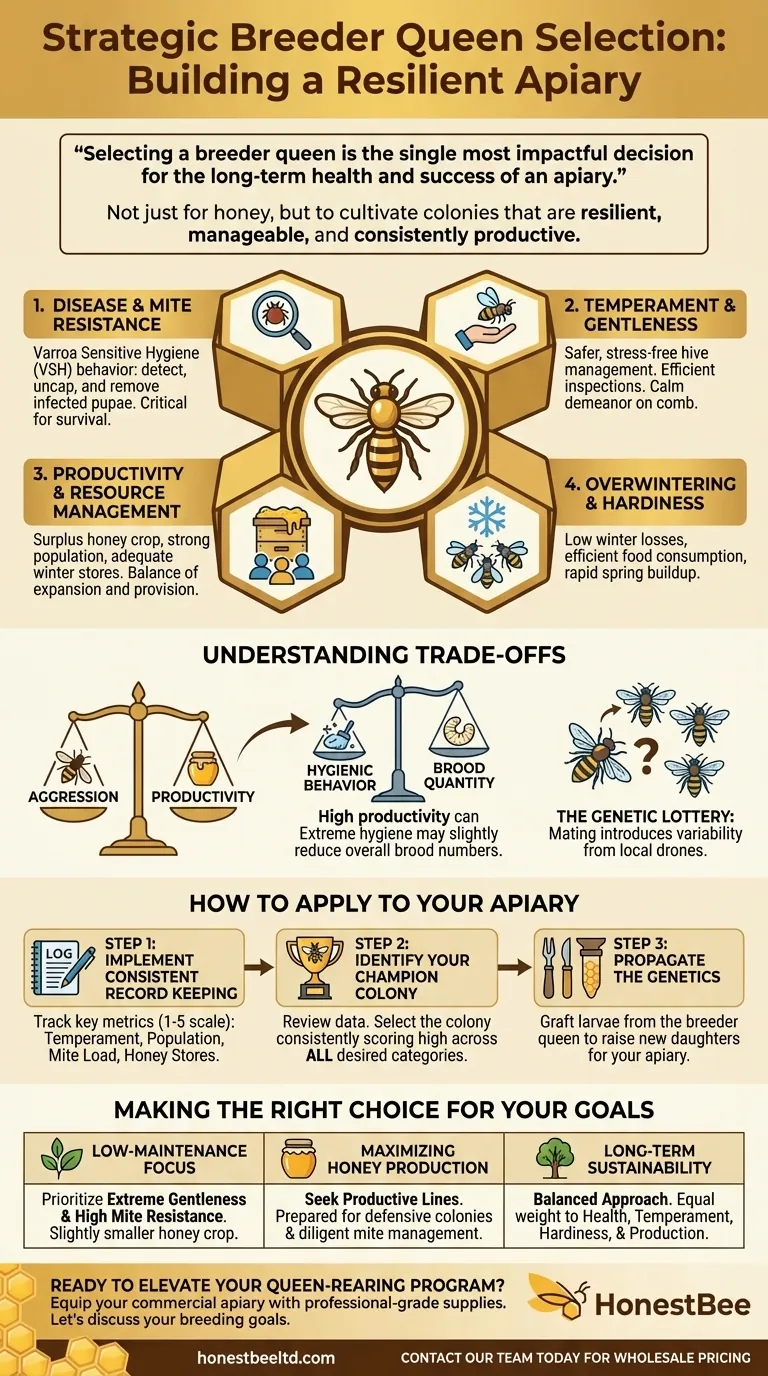
Related Products
- JZBZ Langstroth Queen Rearing Frame for Beekeeping
- Professional Queen Catcher and Introduction Queen Cage
- Professional Wooden Requeening Frame for Beekeeping
- Professional Spring-Action Queen Catcher Clip
- High Performance Plastic Queen Excluder for Beekeeping and Apiary Management
People Also Ask
- Why is it difficult to purchase queens during the production season? The Seasonal Demand Spike Explained
- What is the timeline for queen breeding? A 28-Day Guide from Egg to Laying Queen
- How long can a hive survive queenless? The Critical Countdown to Save Your Colony
- What are orientation flights for virgin queens? The Essential Guide to Queen Bee Navigation
- What is the purpose of queen rearing frames? Master Controlled Queen Production for Your Apiary

